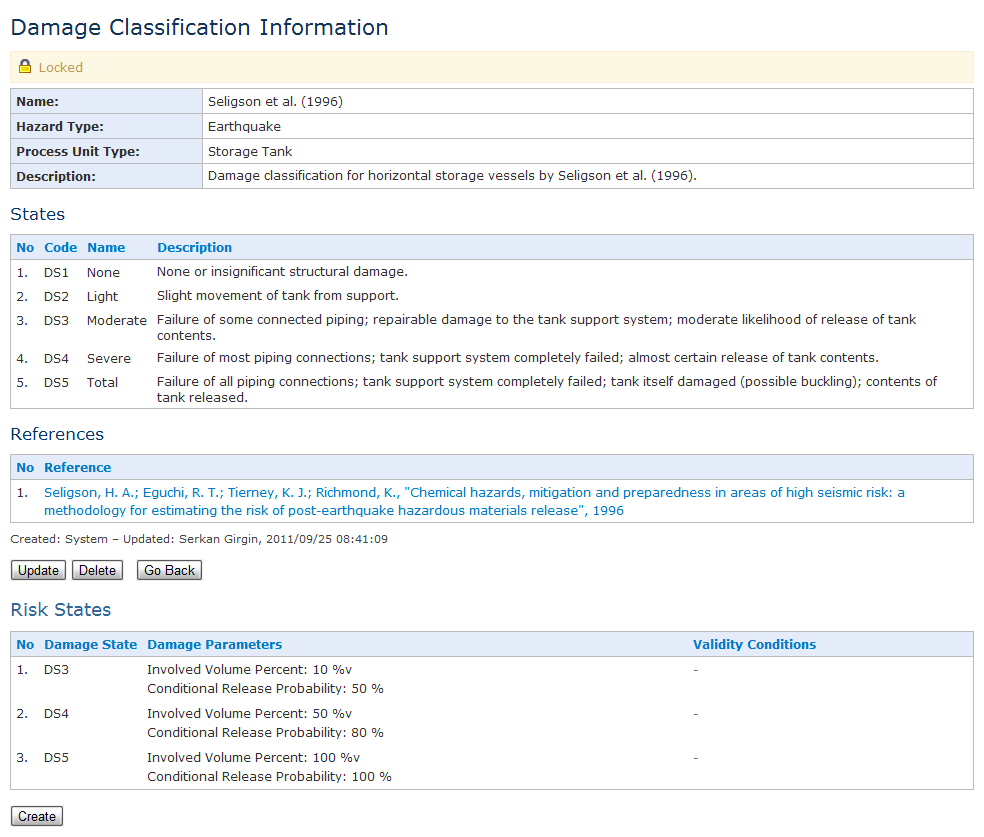Damage Classifications
The estimation of the potential damage due to a natural event is based on the calculation of the probability of a certain damage given a set of on-site natural hazard parameters. Because the extent of dam-age to an engineered structure (e.g. building, plant unit, storage tank) may vary significantly from case to case, a simplification is necessary to facilitate the calculations. Generally, this is done by grouping similar damage severities into a pre-defined set of damage states, ranging from no to complete damage in a gradual manner in several steps (U.S. FEMA, 1997).
A typical damage classification is given in Table 1.
Table 1. Damage classification of HAZUS for storage tanks (U.S. FEMA, 1997)
Damage states can be defined by using various criteria, such as the extent of structural damage or the cost of replacement. The selection of the criteria mainly depends on the target application area, e.g. economic risk assessment or consequence analysis. Damage states are also commonly used for natech damage estimation and form the basis of fragility curves. RAPID-N also utilizes damage classifications and the corresponding damage states in its natech risk assessment methodology. They are stored as damage classification records. The data fields of the damage classification records are listed in Table 2.
Table 2. Damage classification data fields
Since damage states are natural hazard specific, a hazard type should be selected for each damage classification. The name of the damage classification and a short description should be provided. By default, the damage classification is valid for all plant unit types. A plant unit type can be specified explicitly, if the damage classification is defined only for that plant unit type (e.g. storage tanks).
Multiple damage states can be defined for each damage classification. At least one damage state is mandatory. Damage states are identified by damage classification-specific unique codes. Common prac-tice is to use sequential numbers prefixed by "DS", e.g. DS1, DS2, DS3. If available, names such as "None", "Light", "Moderate" can also be specified for more information (Figure 1). A short description of the damage state should be provided to depict the type and extent of damage covered by the damage state.
Bibliographic references of the damage classification can be indicated by selecting the references from the list of references available in the database. At least one reference is mandatory to assure data qual-ity. Risk states related to the damage classification can be accessed from the damage classification information page. See "Risk States" section for more details on risk states and how they are used to assess natech risks.

Figure 1. Damage classification information
Risk Assessment | Natural Hazards | Industrial Plants | Scientific | Users |
